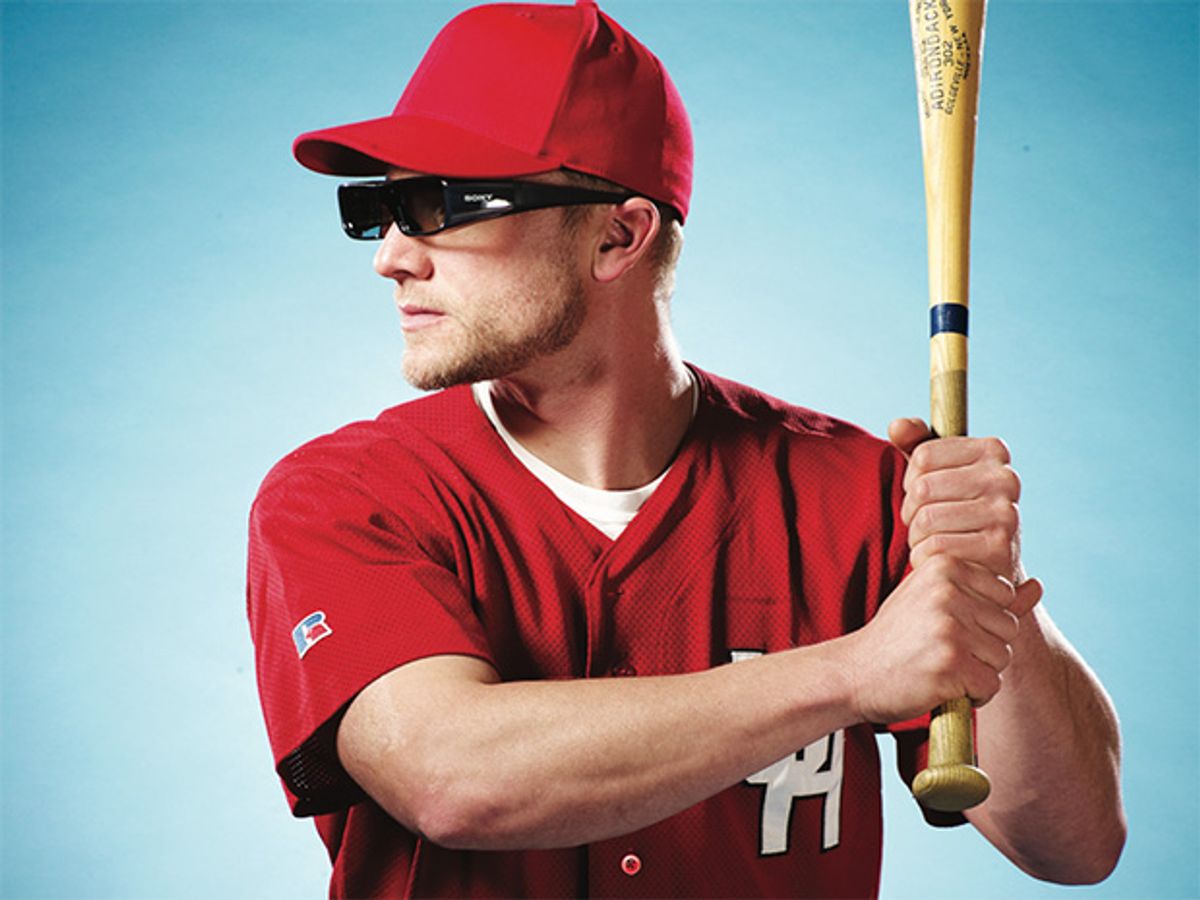Dream Jobs 2011: At Work at ESPN’s Hidden Sports-Tech Paradise
Ricky Langer has landed in the envy-inducing vortex of his passions: ESPN’s tech team

Ricky Langer
IEEE MEMBER
AGE 29
WHAT HE DOES
Designs and maintains technical systems for the world's leading sports network.
FOR WHOM
ESPN
where he doeS It
Bristol, Conn.
FUN FACTORS
Rubs elbows with pro athletes; gets discount tickets to sporting events; can watch game highlights anywhere, anytime, on ESPN headquarters' ubiquitous flat-screen TVs.
This profile is part of IEEE Spectrum’s Special Report on Dream Jobs 2011.
Let's say you're an avid sports fan and a pretty fair athlete yourself. If you couldn't go pro, what would you do for a living? For a self-described tech geek, tinkering with new technologies at the world's largest man cave—a 40-hectare sports lover's paradise complete with a miniature American football field for pep rallies and concerts—is about as good as it gets. Sure, Ricky Langer, a senior systems engineer for ESPN, the sports programming giant, used to be awestruck when he saw famous athletes strolling through the halls, but he's more blasé about it now.
"Every time I walk in this place, sports is all around me," says Langer. At ESPN's headquarters in Bristol, Conn., the walls are covered floor to ceiling with commemorative jerseys, helmets, and hockey sticks. In nearly every room and corridor, large flat-panel TVs are tuned to games, highlights, and sports talk. Amid the bustle at this athletics playground, Langer is charged with finding new and better ways to broadcast sports programming across the globe.
Like so many engineers before him, Langer has a love for gadgets that emerged when his parents indulged his propensity for taking things apart and reassembling them. But as an energetic child growing up in northwest Connecticut, he says he can't remember a time when athletics wasn't a part of his life as well. "I was the youngest of six kids; I had to pick things up quickly and master a lot of skills to make up for the age difference," he recalls. He joined a traveling youth hockey team and played baseball, soccer, and basketball as a high school athlete. In college, he narrowed his focus, lettering in Division I baseball while earning an electrical and audio engineering technology degree at the University of Hartford. "Baseball is my life," the solidly built former college center fielder explains. "When I'm not working or hanging out with my fiancée, I'm playing baseball."
To Langer, who landed an entry-level technology job at the sports network before graduating in 2004, the work has been a perfect fit. On a typical day, he crosses paths with several recently retired pro ball players who serve as studio analysts, and he gets to keep an eye on the day's sports events—tuning in to games even as he completes his assignments. "I remember when I started six years ago, the Red Sox and the Yankees were playing a day game. So I pulled up the feed on the monitor I was at and kept on doing my work with the game in the background," he says. "That was a pretty cool feeling."
Chuck Pagano, ESPN's executive vice president of technology, explains that giving workers the liberty to be sports enthusiasts makes for more passionate employees. "Plus, there's no better way to serve sports fans than to understand what they're looking for. And Ricky's definitely a sports fan."
As an engineer, though, Langer finds the technology just as thrilling: "What makes this job cool is that every morning on my way to work, I'm thinking, 'What new piece of technology am I working with today?' " Langer, who says his group acquires a new project every few months, gets excited when he feels he's closing in on a design. "It propels you," he says. "You know there's an answer out there, and that's what makes you strive to get it done. That and the fact that I can actually sit in front of a TV anywhere in the world and see the result of my work."
Pagano, who has been at ESPN since its inception, notes that Langer "really hit a home run" with one recent project. He led a team that designed the master control system that allows ESPN to broadcast games in 3-D with graphics, commercials, and promos. Though Langer modestly describes the assignment as "simple from a design standpoint—a router with a bunch of converters wrapped around it, plus a 3-D switcher that handles the left eye and right eye," Pagano points out that merging separate images to create a single 3-D picture was really tough to do.
The initial plan for ESPN 3D, first announced a year ago, called for baby steps, says Pagano. Games would be presented in 3-D, but commercials and promotional elements would not. "But at the last minute, we were asked to pull a rabbit out of the hat," Pagano says. That rabbit was the master control system, which integrates the sports programming with commercial and promotional segments—all in 3-D. No such system existed, so it was up to Langer and another engineer on the project to figure out how to pull it off.
Unlike with audio-video synchronization, where a little lag in the audio is hardly noticeable, viewers can pick up on even a single frame's difference between the left and right eye in a 3-D signal. And even when the eyes are timed correctly, the signals can end up inverted, switching the foreground and the background. In that case, the viewer perceives what ought to be the foreground as appearing behind the intended background, which is out of focus.
As Langer and his team ran sample video feeds on the equipment in the 3-D master control room, they figured out an easy way to detect whether a weirdly displayed image was the result of inversion. "If we turned our 3-D glasses upside down so the lenses were switched and the images looked perfect, then that was the issue," he reports. In just 40 days, Langer and his colleagues readied the master control for the launch of ESPN's 3-D channel with a broadcast of the 2010 FIFA World Cup. Though Langer had hoped to get his own 3-D TV set to watch the results, "my fiancée wouldn't let me," he says.
With the high-profile 3-D project behind him, Langer is enjoying a break from the spotlight. He is currently designing an IP network that will allow anyone on the ESPN campus to easily access footage constantly being brought in from game sites. Currently, that footage is stored on tapes and other media and must be carried by hand from one part of the campus to another. When he's not working on that project, he's upgrading the older studios on campus for high definition broadcasting.
Langer's eyes light up when he describes his work. That's because for the most part, the former standout athlete sees his role as an engineer as akin to a referee's: He's at the top of his game when the audience doesn't notice his input.
This article originally appeared in print as "Sports Knight."
About the Author
For more about the author, see the Back Story, "Fantasy Sports Reporting."
To Probe Further
For more articles and special features, go to Dream Jobs 2011.
